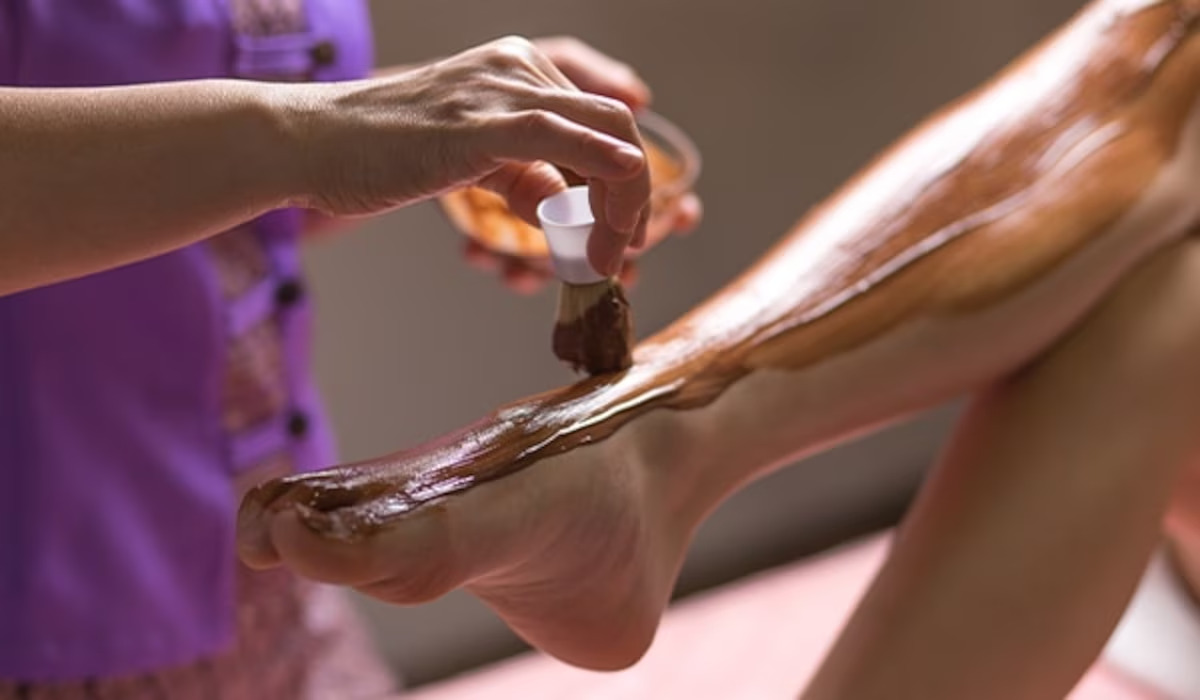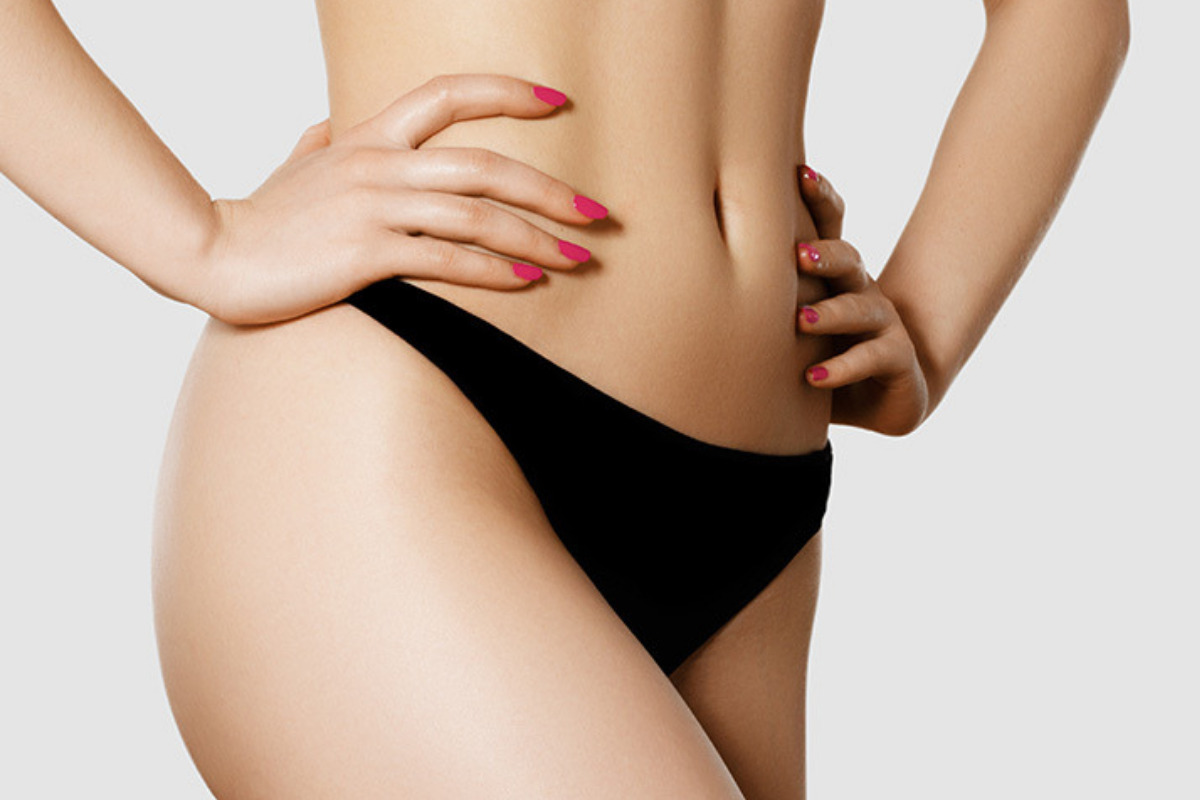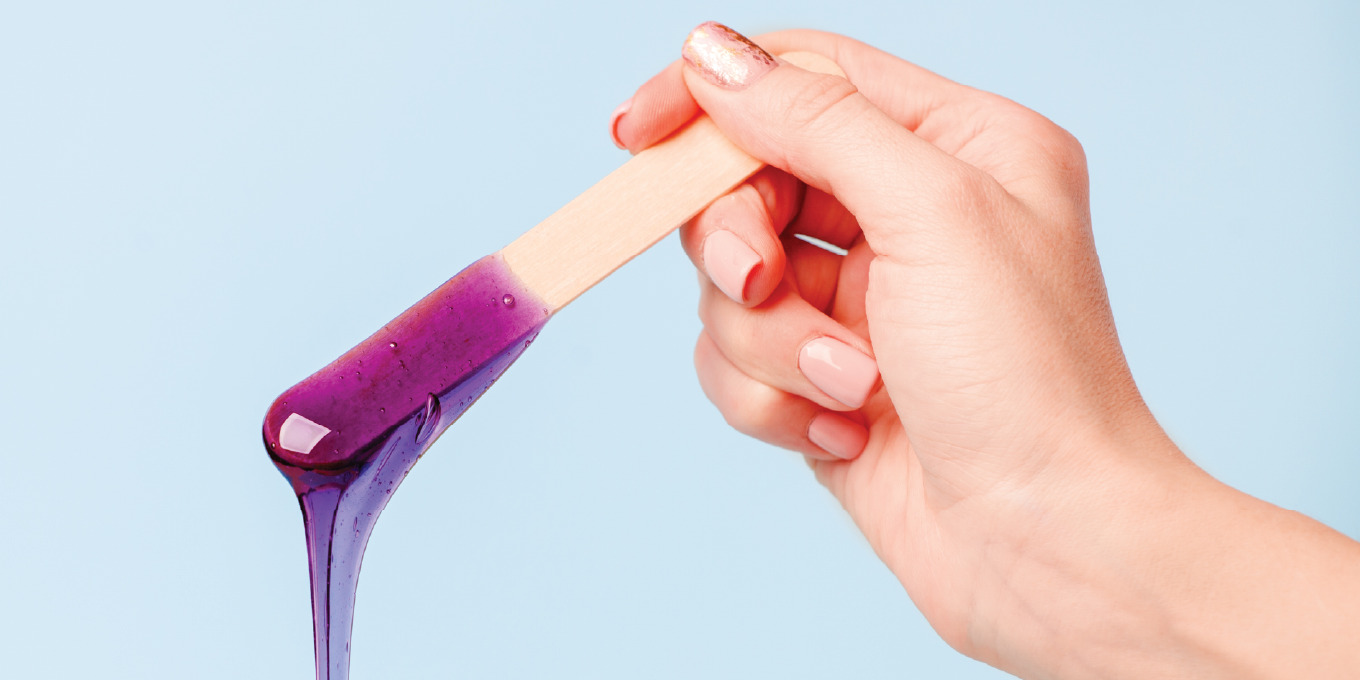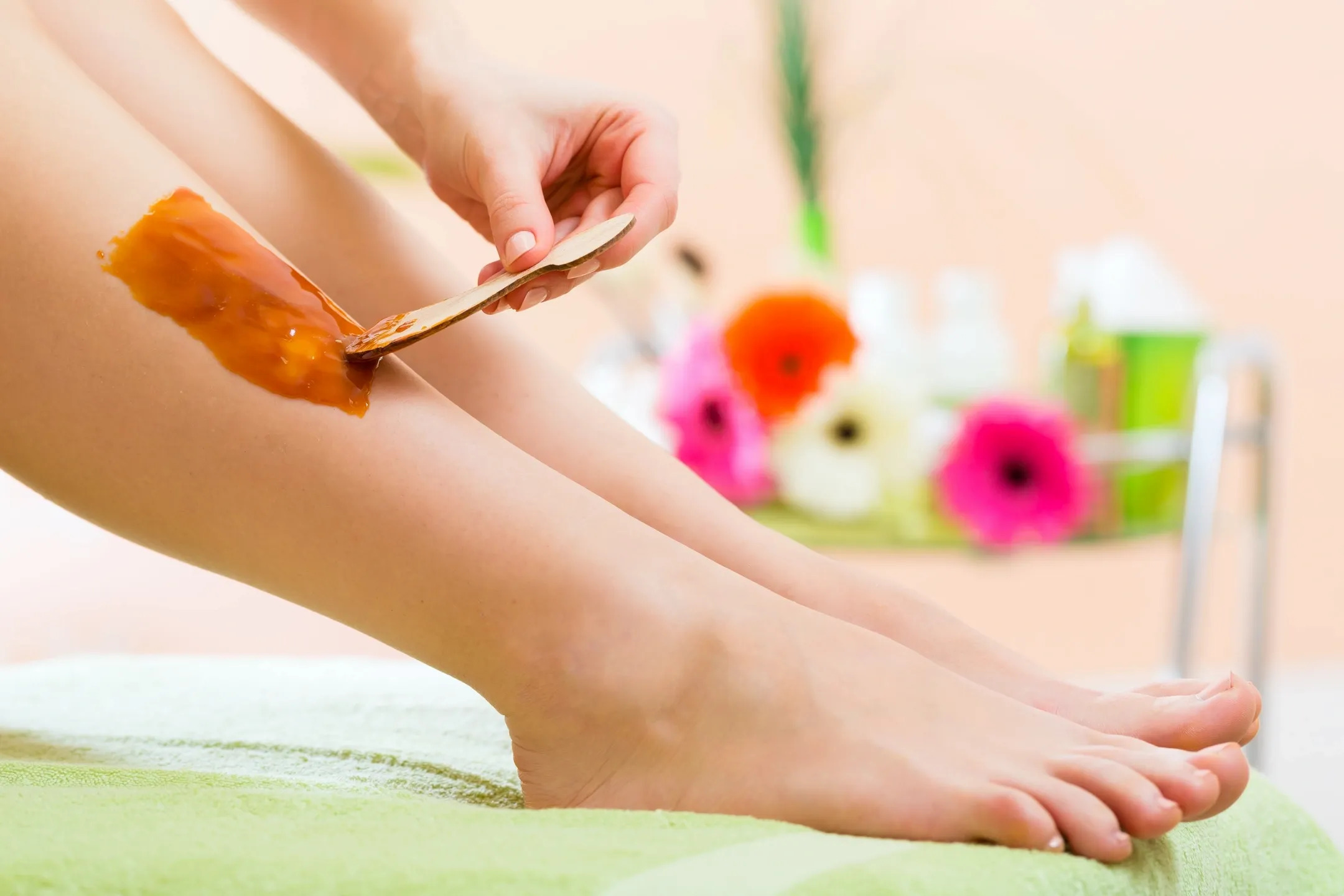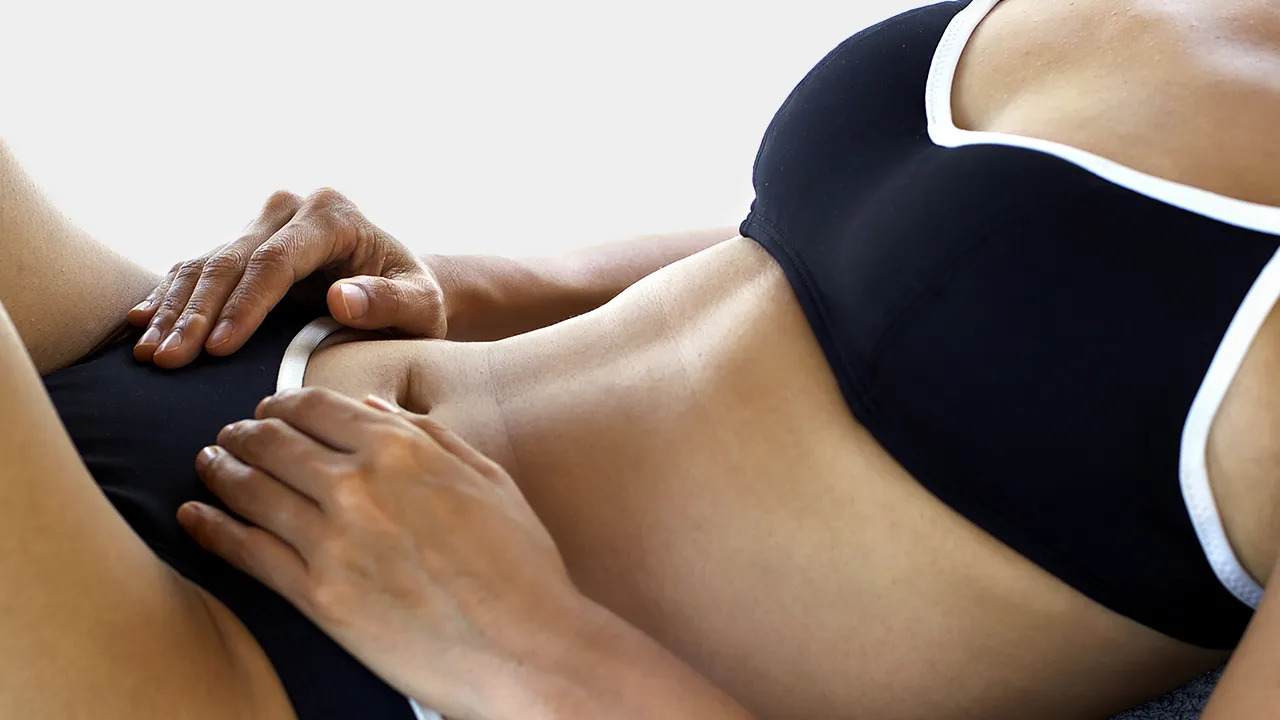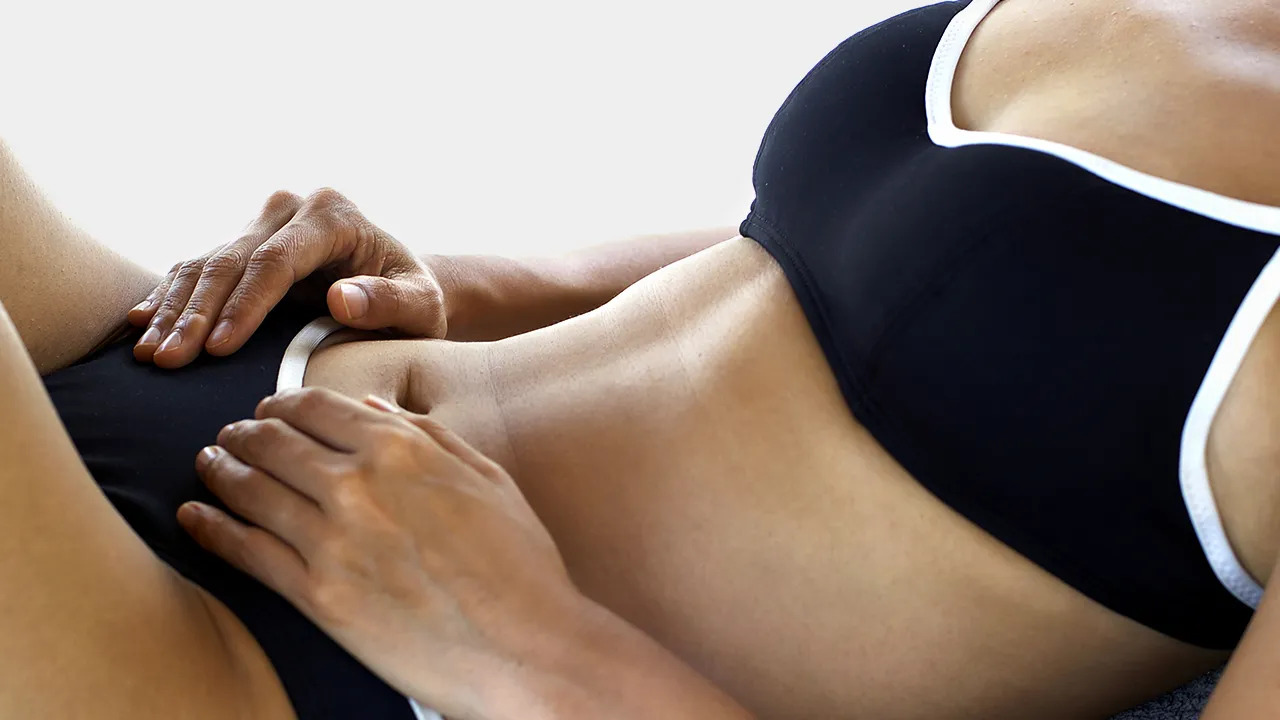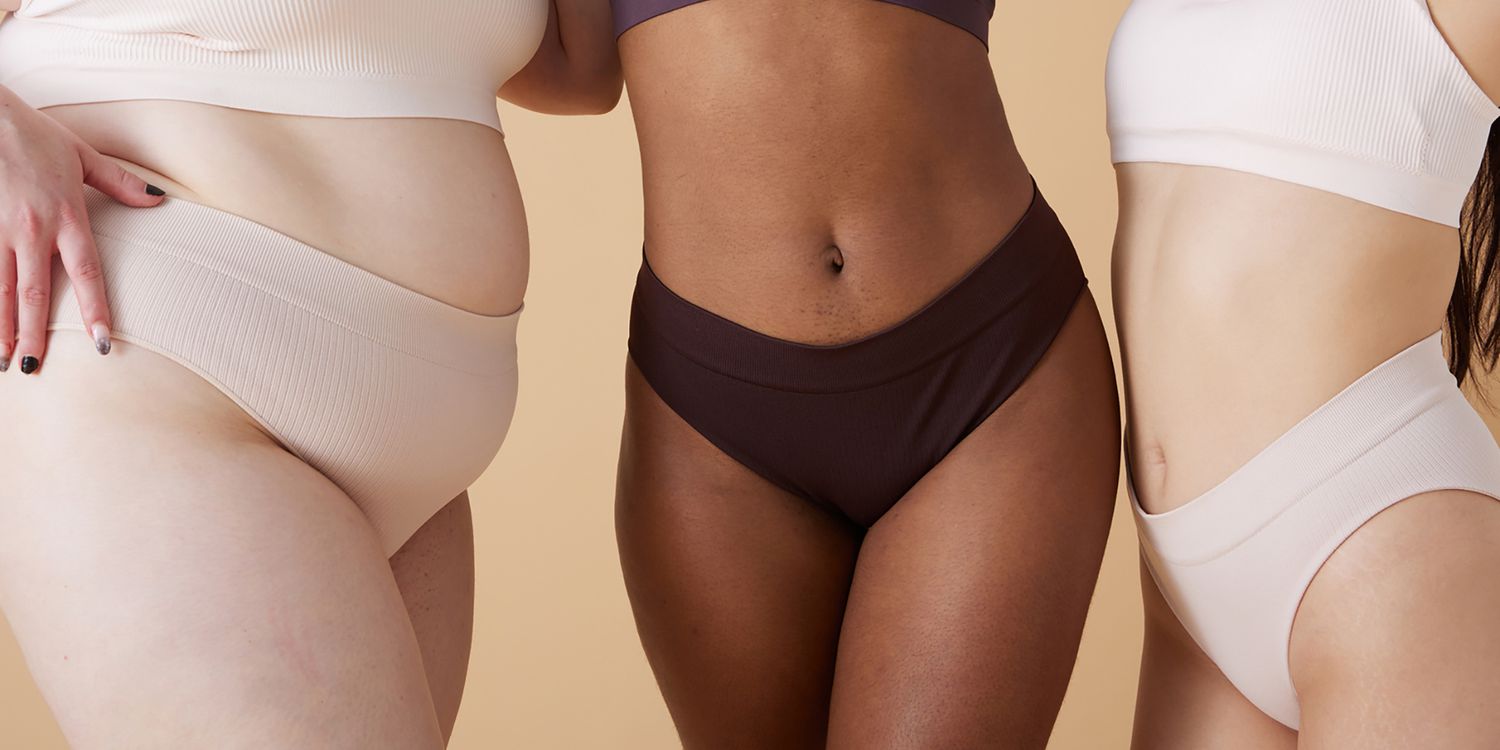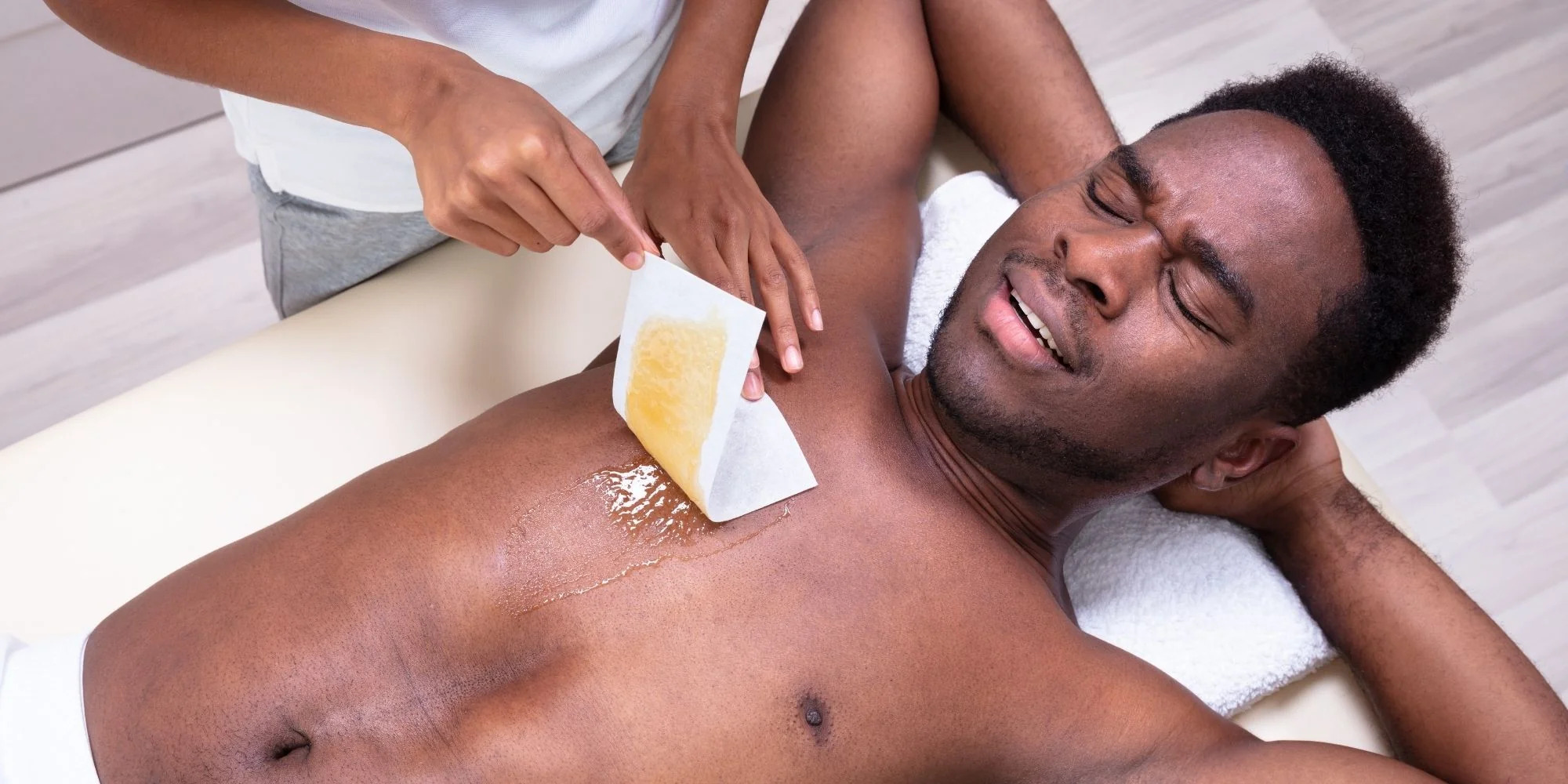

FAQs
What Hurts More Brazilian Wax Or Laser
Modified: August 5, 2023
Find out if a Brazilian wax or laser hair removal hurts more. Get answers to your general questions about which method is less painful and more effective.
(Many of the links in this article redirect to a specific reviewed product. Your purchase of these products through affiliate links helps to generate commission for Under-tec.com, at no extra cost. Learn more)
Table of Contents
- Introduction
- Understanding Brazilian Wax
- Understanding Laser Hair Removal
- Pain Evaluation: Brazilian Wax
- Pain Evaluation: Laser Hair Removal
- Factors Affecting Pain Perception
- Comparing the Pain Levels: Brazilian Wax vs. Laser Hair Removal
- Tips to Minimize Pain during Brazilian Wax
- Tips to Minimize Pain during Laser Hair Removal
- Conclusion
Introduction
When it comes to hair removal, there are several options available, each with its own set of pros and cons. Two popular methods that many individuals consider are Brazilian waxing and laser hair removal. Both techniques offer long-lasting results, but the burning question remains: which one hurts more?
Before we dive into the pain factor, let’s understand the basics of these hair removal methods.
Brazilian waxing is a technique that involves the complete removal of pubic hair using warm wax. The process includes applying hot wax on the desired area, placing a cloth strip over it to adhere to the wax, and swiftly pulling it off in the opposite direction of hair growth. This process effectively removes hair from the root, leaving the skin smooth and hair-free for several weeks.
Laser hair removal, on the other hand, utilizes laser technology to target hair follicles and inhibit their growth. The procedure involves directing a laser beam onto the skin, which is absorbed by the pigment in the hair follicles. The heat from the laser damages the follicles, hindering their ability to regrow hair. Over multiple sessions, laser hair removal can lead to a significant reduction in hair growth, offering a semi-permanent hair removal solution.
Now that we have a basic understanding of both Brazilian waxing and laser hair removal, let’s delve into the pain associated with these methods. Pain perception is subjective, and it can vary from person to person. However, we can evaluate the pain levels based on several factors, including personal experiences and physiological responses.
In the following sections, we will evaluate the pain associated with Brazilian waxing and laser hair removal, discuss the factors that affect pain perception, and ultimately compare the pain levels between the two methods. Additionally, we will provide tips to help minimize the pain experienced during both procedures, allowing you to make a well-informed decision based on your individual preferences and tolerance levels.
Understanding Brazilian Wax
Brazilian waxing is a popular hair removal method that originated in Brazil and has gained immense popularity worldwide. It involves the complete removal of hair from the pubic region, leaving the area smooth and hair-free.
The process of Brazilian waxing typically begins with the application of warm wax to the desired area using a spatula or roller. The warm wax is applied in the direction of hair growth, allowing it to adhere to the hair follicles. A cloth strip is then firmly pressed onto the wax to ensure proper adhesion. Once the wax has cooled and hardened, the cloth strip is swiftly pulled off in the opposite direction of hair growth, removing the hair from the root.
One of the primary advantages of Brazilian waxing is the long-lasting results it offers. Since the hair is removed from the root, it takes longer for the hair to regrow, typically ranging from 3 to 6 weeks. The regrowth is also finer and softer compared to other hair removal methods such as shaving.
While Brazilian waxing provides smooth and hair-free skin, there are a few considerations to keep in mind. First and foremost, the procedure can be uncomfortable or even painful for some individuals. The pain experienced during a Brazilian wax can vary depending on factors such as individual pain tolerance, menstrual cycle, and the expertise of the esthetician performing the wax.
Brazilian waxing also requires a certain level of hair length for effective removal. The hair needs to be at least one-fourth of an inch long for the wax to properly grab onto the hair follicles. This means that there may be a waiting period between waxing sessions to allow the hair to grow to the desired length.
Additionally, it’s important to ensure proper hygiene and aftercare following a Brazilian wax. Exfoliating the skin gently before the wax can help remove dead skin cells and prepare the area for waxing. After the wax, it’s advisable to avoid tight clothing, hot showers, and activities that may cause excessive sweating, as the newly waxed skin may be more sensitive and prone to irritation.
Overall, Brazilian waxing offers a hair removal solution that can provide smooth and long-lasting results. However, it’s essential to consider the pain factor and take necessary precautions to minimize any discomfort during and after the procedure.
Understanding Laser Hair Removal
Laser hair removal is a popular method for semi-permanent hair reduction. It involves the use of laser technology to target and destroy hair follicles, inhibiting their ability to regrow hair. This procedure can be performed on various areas of the body, including the face, legs, underarms, and bikini line.
The process of laser hair removal begins with the application of a cooling gel to the targeted area. The laser device emits a concentrated beam of light that is absorbed by the pigment (melanin) in the hair follicles. The heat from the laser damages the follicles, impairing their ability to produce new hair.
One of the key advantages of laser hair removal is its ability to selectively target dark, coarse hair while leaving the surrounding skin unharmed. This makes it a suitable option for individuals with a wide range of skin tones and hair colors.
Laser hair removal offers long-term results, with many individuals experiencing a significant reduction in hair growth after multiple sessions. The number of sessions required can vary depending on factors such as hair type, skin tone, and the targeted area. Each session typically lasts for about 15 minutes to an hour, depending on the size of the treatment area.
While laser hair removal is generally well-tolerated, some individuals may experience discomfort during the procedure. The sensation can vary from a mild stinging or tingling feeling to a rubber band snapping against the skin. However, most people find the pain to be manageable and of short duration.
It’s important to note that laser hair removal may not provide instant results. Hair growth reduction typically occurs gradually over time, requiring multiple sessions for optimal effectiveness. Additionally, maintenance sessions may be necessary to ensure long-term hair reduction.
After a laser hair removal session, it’s important to protect the treated area from sun exposure as the skin may be more sensitive to UV rays. Applying sunscreen and avoiding direct sunlight can help prevent complications such as pigmentation changes or burns.
In summary, laser hair removal offers a semi-permanent hair reduction solution that targets the hair follicles while preserving the surrounding skin. With proper planning and adherence to aftercare instructions, laser hair removal can provide long-lasting results and reduce the need for constant hair removal methods.
Pain Evaluation: Brazilian Wax
When it comes to evaluating the pain associated with a Brazilian wax, it’s important to consider various factors that can influence an individual’s pain perception. While pain is subjective and can vary from person to person, understanding these factors can provide insights into the potential discomfort of the procedure.
One of the key factors that can affect the pain experienced during a Brazilian wax is individual pain tolerance. Some individuals may have a higher pain threshold and may find the procedure more tolerable, while others may have a lower pain tolerance and experience more discomfort.
The menstrual cycle can also play a role in pain sensitivity. Many women find that their pain levels are heightened during certain phases of their menstrual cycle. It’s advisable to schedule a Brazilian wax appointment during a time when the pain sensitivity is minimal to reduce discomfort.
The expertise of the esthetician performing the wax can also impact the pain experienced. A skilled and experienced esthetician will be able to perform the waxing process efficiently and effectively, minimizing any unnecessary pain or discomfort.
Now, let’s discuss the pain level associated with a Brazilian wax. While pain perception is subjective, many individuals describe the sensation as a quick, sharp sting or a momentary burning sensation as the wax is pulled off. Some may find it more uncomfortable in sensitive areas, such as the bikini line or the inner thighs. The level of pain can also depend on the amount of hair being removed and the speed at which the esthetician performs the wax.
It’s important to note that the discomfort experienced during a Brazilian wax is temporary and typically subsides soon after the procedure. Applying a soothing lotion or a cold compress to the waxed area can help alleviate any redness or irritation.
Overall, while a Brazilian wax can involve some discomfort, many people find that the benefits of smooth and hair-free skin outweigh the temporary pain. Taking proper precautions and choosing a reputable esthetician can help minimize any discomfort and ensure a positive experience.
Pain Evaluation: Laser Hair Removal
When it comes to evaluating the pain associated with laser hair removal, there are several factors to consider. While pain levels can vary from person to person, understanding these factors can provide insights into the potential discomfort of the procedure.
One of the primary factors that can influence pain perception during laser hair removal is individual pain tolerance. Some individuals may have a higher pain threshold and find the procedure more tolerable, while others may have a lower pain tolerance and experience more discomfort.
The sensation during laser hair removal is often described as a mild stinging or tingling feeling, similar to a rubber band snapping against the skin. Most people find the sensation bearable, and it typically lasts only for a brief moment during each pulse of the laser.
The location of the treatment area can also impact the level of discomfort. Areas with thinner skin, such as the upper lip or bikini line, may be more sensitive and potentially more uncomfortable than areas with thicker skin.
The level of pain experienced during laser hair removal can also depend on the type of laser used. Advancements in laser technology have led to the development of devices with built-in cooling mechanisms, such as cryogen sprays or chilled tips, which help to minimize discomfort and protect the surrounding skin.
It’s important to note that most clinics will offer various measures to help manage any potential discomfort during the treatment. This may include the option to apply a topical anesthetic cream before the procedure or using a cooling system during the treatment to alleviate any heat or discomfort.
It’s worth mentioning that the sensation of pain during laser hair removal is typically brief, and the duration of the procedure can vary depending on the size of the treatment area. Small areas such as the upper lip or underarms may only take a few minutes, while larger areas such as the back or legs may require more time.
After the procedure, it’s common to experience some mild redness or swelling in the treated area. This is a temporary side effect and generally subsides within a few hours or days. Applying a soothing lotion or cool compress can help alleviate any discomfort.
In summary, while laser hair removal may involve some degree of discomfort, most individuals find it to be a tolerable and manageable pain level. The short duration of the procedure and the potential for long-term hair reduction often outweigh any temporary discomfort experienced during the process.
Factors Affecting Pain Perception
When it comes to experiencing pain, individuals’ perceptions can vary greatly. Several factors can influence the way we perceive pain, including both physiological and psychological elements. Here are some key factors that can affect pain perception during hair removal procedures like Brazilian waxing and laser hair removal:
Individual Pain Tolerance: Everyone has a different pain threshold, which is influenced by genetics, previous pain experiences, and personal conditioning. Some individuals may have a higher pain tolerance and are able to handle hair removal procedures with minimal discomfort, while others may be more sensitive to pain.
Location of the Treatment Area: The sensitivity of different areas of the body can impact pain perception. Areas with thin or sensitive skin, such as the bikini line or upper lip, may be more prone to discomfort during hair removal procedures.
Hormonal Influence: Hormonal fluctuations can affect pain sensitivity. For example, some women may find that their pain tolerance is higher or lower during certain phases of their menstrual cycle. It’s important to consider these hormonal changes when scheduling hair removal appointments to minimize discomfort.
Psychological Factors: Psychological factors, such as anxiety, fear, or stress, can amplify the perception of pain. Individuals who are anxious about the procedure or have a fear of pain may experience more discomfort during hair removal procedures. Creating a calm and relaxed environment can help mitigate the impact of these psychological factors.
Esthetician’s Technique and Experience: The technique and experience of the esthetician performing the hair removal procedure can influence pain perception. An experienced esthetician who uses proper techniques and has a gentle touch can help minimize any unnecessary pain or discomfort.
Preparation and Aftercare: Proper preparation and aftercare can play a role in pain perception during hair removal procedures. For example, exfoliating the skin before a Brazilian wax can help remove dead skin cells, allowing for better wax adhesion and potentially reducing pain. Following recommended aftercare instructions, such as avoiding harsh products or excessive heat, can also help alleviate discomfort during the healing process.
It’s important to remember that pain perception is subjective and influenced by a combination of these factors. What may be painful for one person may be tolerable for another. Understanding these influences can help individuals and estheticians better manage and minimize any discomfort during hair removal procedures.
Comparing the Pain Levels: Brazilian Wax vs. Laser Hair Removal
When evaluating the pain levels of different hair removal methods, it’s important to compare the experiences of Brazilian waxing and laser hair removal. While pain perception is subjective, we can consider various factors to understand potential differences in discomfort between these two procedures.
During a Brazilian wax, the pain is often described as a quick, sharp sting or a momentary burning sensation as the wax is pulled off. The level of pain can vary depending on individual pain tolerance, the expertise of the esthetician, and the sensitivity of the treatment area. While the pain is relatively short-lived, some individuals may find it uncomfortable, especially in more sensitive areas such as the bikini line or inner thighs.
Laser hair removal, on the other hand, is usually associated with milder discomfort. Many individuals describe the sensation as a mild stinging or tingling feeling, similar to a rubber band snapping against the skin. The pain is often brief and localized to the area being treated. Furthermore, advancements in laser technology have led to the development of cooling mechanisms, which help minimize discomfort and protect the surrounding skin.
While pain perception can vary from person to person, many individuals report that laser hair removal is generally less painful compared to a Brazilian wax. This is due in part to the targeted treatment of individual hair follicles with laser hair removal, whereas waxing removes hair in larger sections.
It’s important to note that pain during both procedures is temporary and the discomfort subsides soon after the treatment. Additionally, individuals may find that the benefits of long-lasting results from laser hair removal or the smooth, hair-free feeling from a Brazilian wax outweigh any temporary pain experienced during the process.
Ultimately, the choice between Brazilian waxing and laser hair removal should not solely be based on pain levels. Other factors such as cost, convenience, skin sensitivity, and desired long-term hair reduction should also be taken into consideration when deciding on the most suitable hair removal method.
Consulting with a licensed esthetician or dermatologist can provide personalized insights into the pain levels and benefits of each procedure, helping individuals make an informed decision based on their specific needs and preferences.
Tips to Minimize Pain during Brazilian Wax
Brazilian waxing can be a slightly uncomfortable or painful experience for some individuals. However, there are several tips and techniques that can help minimize the pain and make the process more manageable. Here are some suggestions to consider:
Choose a Skilled Esthetician: Opt for a skilled and experienced esthetician who is familiar with Brazilian waxing. A professional esthetician will have proper technique and be able to complete the waxing process efficiently, minimizing pain and discomfort.
Apply a Topical Numbing Cream: Consider applying a topical numbing cream to the waxing area 30 minutes before the procedure. This can help temporarily desensitize the skin and reduce pain during the waxing process. Be sure to check with your esthetician for recommendations on safe and effective numbing creams.
Take Over-the-Counter Pain Relief: If you anticipate experiencing significant pain during the Brazilian wax, you may consider taking an over-the-counter pain reliever, such as ibuprofen or acetaminophen, about an hour before the appointment. This can help alleviate any discomfort and reduce pain sensitivity.
Manage Hair Length: Ensure that the hair being waxed is the optimal length. Ideally, the hair should be around one-fourth to one-half of an inch long for effective removal. Hair that is too short may be difficult to wax, while hair that is too long can increase the pain and discomfort. Consult with your esthetician for specific recommendations on hair length.
Take Deep Breaths and Relax: Before and during the waxing process, take deep breaths and try to relax your muscles. Tension and anxiety can intensify pain perception, so staying calm and breathing deeply can help alleviate discomfort. Communication with your esthetician can also help in guiding you through the process and ensuring your comfort.
Use Distraction Techniques: Engage in distraction techniques to take your mind off the waxing process. You can bring along your favorite music or audiobook to listen to during the procedure, or engage in deep breathing exercises or meditation to focus your attention elsewhere.
Follow Proper Aftercare: Proper aftercare can help minimize any discomfort following a Brazilian wax. Avoid activities that may cause excessive sweating or irritation to the waxed area, and apply soothing lotions or aloe vera gel to calm the skin. Following the aftercare instructions provided by your esthetician can promote healing and reduce post-waxing discomfort.
While these tips can help minimize pain during a Brazilian wax, it’s important to remember that pain levels can vary from person to person. It’s vital to communicate openly with your esthetician about your pain tolerance and any concerns you may have to ensure a comfortable and successful waxing session.
Tips to Minimize Pain during Laser Hair Removal
Laser hair removal is generally known to be a relatively comfortable procedure, but there are a few tips and techniques you can follow to help minimize any potential discomfort. These tips can help ensure a smoother and less painful experience during your laser hair removal sessions:
Choose a Reputable Clinic: Start by selecting a reputable clinic with licensed professionals who have experience in performing laser hair removal procedures. A well-trained technician will know how to adjust the laser settings and operate the device in a way that minimizes pain.
Check for Cooling Mechanisms: Look for clinics that utilize cooling mechanisms, such as cryogen sprays or chilled tips, during the laser hair removal process. These cooling technologies help numb the skin and minimize discomfort during treatment.
Communicate Openly with Your Technician: Inform your technician about your pain tolerance and any concerns you may have. They can adjust the laser settings accordingly to ensure a more comfortable experience for you.
Consider Applying Topical Anesthetic Cream: If you have a particularly low pain threshold or are concerned about potential discomfort, you can discuss the option of applying a topical numbing cream to the treatment area prior to the laser hair removal session. This cream can help numb the skin and reduce pain sensations.
Practice Good Skincare: Ensure that your skin is well-nourished and in its best condition before each laser hair removal session. Moisturized and healthy skin tends to handle the laser treatment better and can result in less discomfort.
Avoid Sun Exposure Before Treatment: Prior to your laser hair removal appointment, it’s important to avoid excessive sun exposure and tanning. Sunburned or heavily tanned skin can be more prone to sensitivity and discomfort during the procedure. Always follow the guidelines provided by your technician regarding sun exposure before and after treatment.
Maintain Hydration: Staying well-hydrated leading up to your laser hair removal session can help keep your skin moisturized and less prone to dryness or irritation. Proper hydration can help improve the overall comfort and effectiveness of the treatment.
Follow Post-Treatment Care Instructions: After each laser hair removal session, adhere to the post-treatment care instructions provided by your technician. This may include avoiding hot showers, excessive sweating, or applying any irritants to the treated area. Proper aftercare will help minimize any potential discomfort or side effects.
Remember, everyone’s pain tolerance is different, and while laser hair removal is generally considered to be a comfortable procedure, the level of discomfort can vary from person to person. By following these tips and maintaining open communication with your technician, you can have a more comfortable and successful laser hair removal experience.
Conclusion
When it comes to hair removal, both Brazilian waxing and laser hair removal are popular options. While pain perception is subjective and can vary from person to person, it is important to consider the factors that influence discomfort during these procedures.
A Brazilian wax involves the complete removal of pubic hair using warm wax. The pain experienced can vary depending on individual pain tolerance and factors such as menstrual cycle and the expertise of the esthetician. Laser hair removal, on the other hand, uses laser technology to target hair follicles and inhibit their growth. The discomfort during laser hair removal is usually described as a mild stinging or tingling sensation, which is generally well-tolerated by most individuals.
Factors such as individual pain tolerance, location of the treatment area, hormonal influences, psychological factors, and the expertise of the esthetician can all affect pain perception during hair removal procedures.
In comparing the pain levels between Brazilian waxing and laser hair removal, many individuals report that laser hair removal tends to be less painful overall. However, it is important to consider other factors such as cost, convenience, skin sensitivity, and desired long-term hair reduction when making a decision about the most suitable hair removal method.
To minimize pain during a Brazilian wax, tips such as choosing a skilled esthetician, applying a topical numbing cream, and managing hair length can be helpful. Similarly, for laser hair removal, choosing a reputable clinic, using cooling mechanisms, and maintaining good skincare can help minimize any discomfort.
Ultimately, the decision between Brazilian waxing and laser hair removal should be based on individual preferences, pain tolerance, and desired results. Consulting with a licensed esthetician or dermatologist can provide personalized insights and recommendations based on your specific needs.
Remember, the goal of any hair removal technique is to achieve smooth and hair-free skin with minimal discomfort. By utilizing the tips and techniques discussed, you can ensure a more comfortable and successful hair removal experience.

